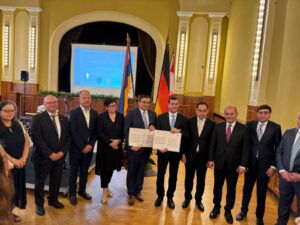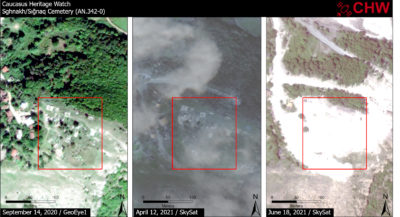ITHACA, N.Y. — Ever since the beginning of last year’s war, one thing on the minds of most Armenians in the homeland and Diaspora, aside from the loss of life and territory, has been the fate of Armenian heritage sites — churches, monasteries, monuments, and so on — in the region of Nagorno-Karabakh. It’s not just the Armenian community and the Republics of Armenia and Artsakh that are concerned. The scholarly community is too, and quite rightly. They have seen the destruction to which Armenian monuments have been subjected in Turkey, Nakhichevan, and elsewhere.
Based at Cornell University, a group called Caucasus Heritage Watch has stepped into the fray with a goal to protect heritage sites under threat due to Azerbaijan’s territorial gains.
A Veteran Team Handles a New Challenge
Archaeologists Lori Khatchadourian and Adam T. Smith of Cornell, and Ian Lindsay of Purdue have been working together since 2002 on the longest-running international project in the South Caucasus, digging around the northern and eastern slopes of Mt. Aragats. (Smith himself has been working in Armenia since 1992.) The team had been working with local archaeologists from Armenia as well where, according to Smith, there is “terrific talent.”
The loss of territory to Azerbaijan shifted the scholars’ attention eastward to the Artsakh region. According to Smith, they had been “watching the aftermath [of the war], having known what has happened to heritage monuments elsewhere, that there was a real present danger and threat. And we had the skills and tools to use satellite technology to monitor sites.”
Like many archaeologists, the group had been using satellite imagery for years. Initially it was in the form of photos released from the NASA archives. Smith and his team were using these photos to detect long-term landscape change, as well as locating sites that would be hard to find on foot. In recent years, private companies have also tapped into that bandwidth, providing pictures for a fee. Smith’s group has been working with a company called Planet Labs to get satellite images of the areas in Armenia where they were digging. From Planet Labs, they have been able to order images of specific places at specific times. Now they needed to use those resources for a different goal.










